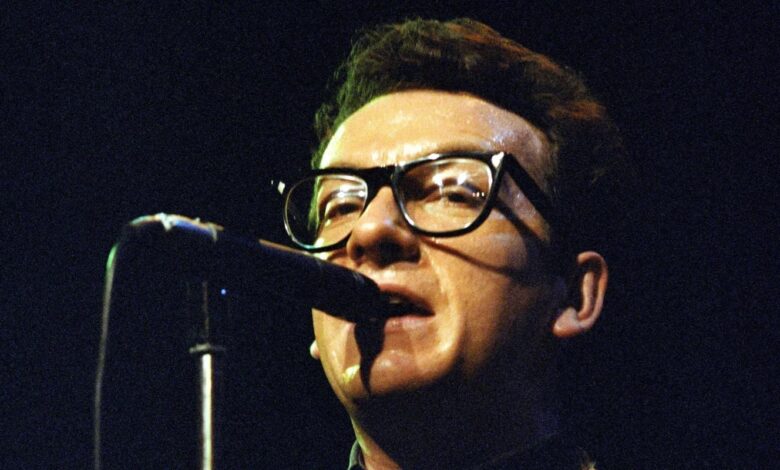Behind the Album: ‘Spike,’ Elvis Costello’s “Solo” Album Featuring a Cast of Thousands

Elvis Costello was undergoing a major career transition at the end of the ’80s, switching record labels and largely moving away from the Attractions, his longtime band. A far-flung, piecemeal approach to recording distinguished his 1989 album Spike, which turned into one of the biggest hits of his career. Reading the credits to Spike is like reading a who’s who of top-notch musicians from around the world at the time the album was recorded. Yet none of that dilutes Costello’s songwriting, which thrills and surprises throughout. Here is how this wonderful record came together.
A Beatle and a Byrd Walk into a Studio …
Elvis Costello went through a stretch of musical soul-searching as the ’80s progressed. As the furious verbosity of his early records began to wane, he looked for different ways of expressing himself. The Attractions didn’t seem to him like the best way to do it—at least not on every project—which is how albums like King of America, released in 1986 with little input from his regular backing band, came about.
After releasing Blood & Chocolate in 1986 with the Attractions, Costello took his sweet time with his next project. During that stretch, he switched labels to Warner Bros., who fronted him a big recording budget. Eager to please his new bosses, he offered them the chance to give their input on the project, as he explained in the liner notes to a reissue of Spike (reprinted on his website):
“I had the blueprint of five albums in my head. Having felt hostility turn into invisibility at Columbia, I offered W.B. their choice. I would even shoot it out with a highly commercial producer if they so desired—believing the songs and my voice could hold their own. They told me to make whatever record I wanted. I seem to have elected to make all five albums at once.”
By that, Costello meant that he recorded at several different locations, ranging from Dublin and New Orleans to Hollywood and London. At each site, a different set of players awaited. And, in each case, the tracks were built up from a basic vocal demo via overdubs with the various session musicians.
Among the A-list players on Spike: Allen Toussaint, Chrissie Hynde, Jim Keltner, Benmont Tench, Marc Ribot, and on and on. On the track “This Town,” both Paul McCartney, who also co-wrote and plays on hit single “Veronica,” and Roger McGuinn appear. But for all the big-name performers in support, Costello’s songs remain center stage, and what an eclectic bunch they are.
Listening Again to Spike
From one song to the next, Spike keeps you off balance in the best possible way. The wicked glee of opening track “This Town” is quickly offset by the dire storytelling of “Let Him Dangle.” “Veronica,” a touching ode to Costello’s grandmother, rolls into the playfully sarcastic “God’s Comic.”
These juxtapositions almost become a theme of their own after a while. Musically, Costello refuses to settle into any one groove long enough for listeners to get into a rut. There’s a lot of melodic beauty within these songs, especially on slow ones like “Satellite” and “Baby Plays Around.” But there’s also a lot of willful weirdness on tracks like “Chewing Gum” and “Miss Macbeth.”
Spike notably contains Costello’s caustic takedown of Margaret Thatcher on “Tramp the Dirt Down.” Nostalgia also courses through the record on songs like “Last Boat Leaving” and “Any King’s Shilling.” As a vocalist, Costello is up to every stylistic turn, with harsh vitriol and sweet sentimentality all well within his range.
Costello has made single albums that tackle specific genres throughout his career, such as country on Almost Blue or hip-hop on Wise Up Ghost. Spike stands alone, however, because of how it throws everything into one pot. And Costello sure sounded in his element as he stirred it all up.



